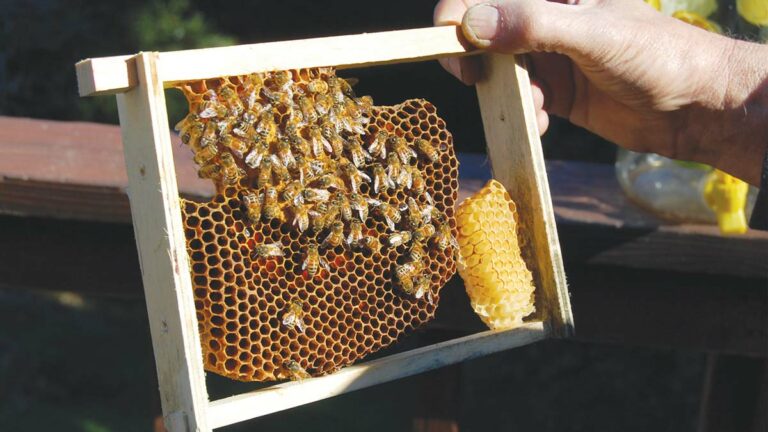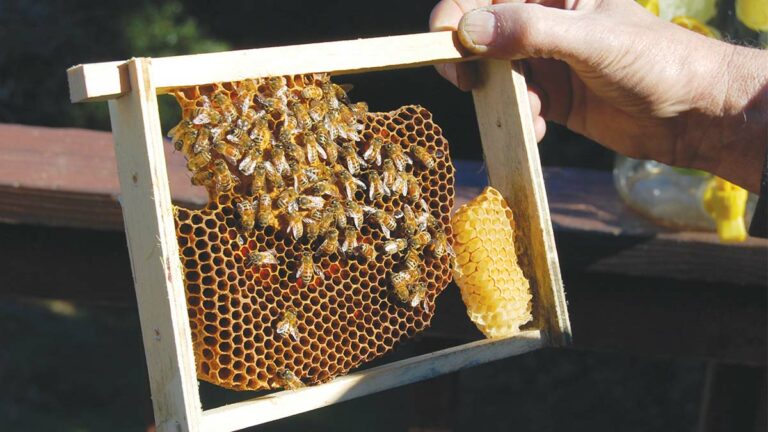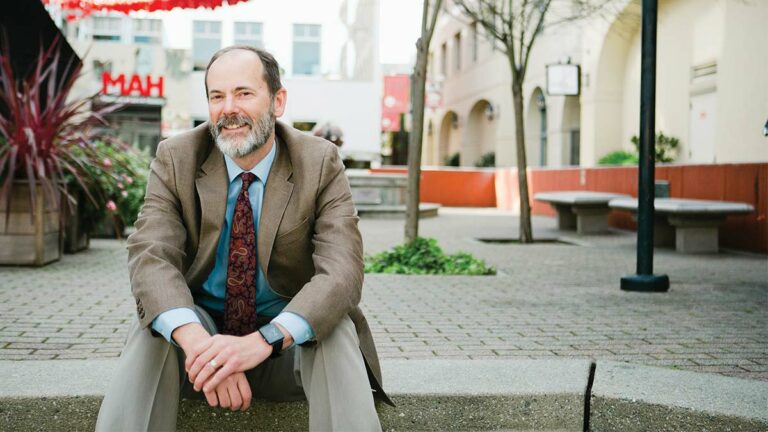EDITOR’S NOTE

I remember running a story about the mysterious “disappearance” of bees way back in 2005, when beekeepers first started reporting it. It was called a disappearance then, though it quickly became clear that what they were dealing with was a mass die-off. What wasn’t clear was pretty much everything else—what was causing it, how many hives it was affecting or what could be done about it.
It’s remarkable that 10 years later, there still aren’t many concrete answers to these questions. No one even knows for sure how many honeybees are dying every year, but the best estimates are shocking. Henry Houskeeper talks about those numbers this week, and what scientists believe the solution to this decade-old mystery might be.
But just because we don’t know for sure what’s causing the problem doesn’t mean that no one is doing anything about it—and that’s where Houskeeper reveals a whole new wrinkle in the story. The hobbyist beekeepers who are rallying to sustain the bee population—a new breed of local heroes—are at the heart of his cover story, and for that reason it’s the most hopeful story I’ve read on the topic yet.
STEVE PALOPOLI | EDITOR-IN-CHIEF
LETTERS TO THE EDITOR
Read the latest letters to the editor here.
Spare the Routes
Re: “Cuts Loom for METRO”: Santa Cruzans love to complain about how there is no parking downtown, or how it’s too expensive, or the carbon footprint blah blah blah, but many would never consider taking a bus. What if the reason METRO ticket sales are flat is that the system doesn’t serve the needs of those who would really use it? Rather than cutting service, perhaps it ought to be expanded.
There are many routes that don’t run frequently or late enough to be of good use to those who need them most; for instance from Portola to and from downtown, and to and from the Capitola Mall. Not everyone has a car or can ride a bicycle, and low-wage workers (such as those who work on either end of these routes) can’t afford Uber.
I have been in Santa Cruz for 10 years, and relied on public transportation for eight of those years when I lived downtown and had no car. I have watched the deepening service cuts with great concern. Currently I’m right on a bus line that I would love to be able to use more frequently, except I would have no way to get back home in the evenings without huge expense. For me, it is an inconvenience, but there are low-income folks, the disabled and seniors, who are much more adversely impacted. In addition, the economy of our county is at risk when people can’t get to and from work, shop, or grab a bite after 6 p.m.
Here’s public input, Mr. Emerson: spare all the routes, and improve service in underserved areas. Work on educating the public about how important it is for growing cities to have good public transportation and why they can benefit by using it.
The city, county, business community and citizenry should be concerned about further cutbacks and work with METRO to find solutions that are for the common good.
Carol L. Skolnick
Santa Cruz
Radical Memories
Re: “Acid Test”: Thanks to Geoffrey Dunn for the memories of the mid-’60s in Santa Cruz. My husband and I and young children moved to Santa Cruz in 1962. We were thinking of moving to Australia or New Zealand because of the increasing militarization in our country. We met some folks from Santa Cruz at a Humanist Conference in San Francisco. Al Johnsen, Manny and Alice Santana, and some others urged us to move to Santa Cruz to help organize what they called an active liberals group to counter the active conservatives who had formed a John Birch group. So we did, and joined the establishment of the Santa Cruz ACLU chapter.
Soon the Peace Center and a draft information center to help young men were organized. (The Resource Center for Nonviolence came later.) Also, a branch of the Women’s International League for Peace and Freedom was organized.
Bill Stewart from Monterey stirred up the old established Democratic Party system when he ran for the House of Representatives as a peace candidate in a primary.
Later in the 1960s, another peace candidate stirred up the old established Democratic Central Committee by running for representative, and urged our group of anti-war, anti-draft, pro-farm-worker-union-and-civil-rights advocates to run for membership in the Democratic Central Committee. A few of us, including me, said, “Sure. Uh … what is the Democratic Central Committee?”
Our chosen candidate, Richard Miller from Pacific Grove, was a history professor at the San Francisco Art Institute, so he explained the importance of becoming a member of that establishment political power.
During the course of Richard Miller’s campaign, a fund-raiser was held. The location was the Santa Cruz Civic Auditorium, and the most popular of the music groups to play was Jefferson Airplane. A light show was done by Dick Smith, a dentist from Felton who was good friends with some of the Merry Pranksters. The light show stirred up the fears of the influential, who considered such things to be conducive to all sorts of misbehavior. An effort was made to not allow the affair because there were too many people. But some of the organizers who were upstanding citizens of the community and were on good terms with the chief of police talked with the chief, and the event went on.
Of course, Richard Miller did not win in the primary. But his campaign was a valuable part of the changes that happened in the ’60s: the civil rights movement. The farm workers strike. The anti-war, anti-draft actions.
I remember the unveiling of Ron Boise’s statue, and the supportive speech made by the mayor. The Mothers for Morality formed to fight such sinful art. Their leader said that sins made dents on the brain. Even naughty little babies who threw their food on the floor would get dents on their brains. The dents would be there until Jesus washed them away.
I can still see Lee Quarnstrom roller skating in the aisles of the Hip Pocket book store when he was working there.
Ken Kesey and the Merry Pranksters were a valuable part of all this.
Pat Miller
Santa Cruz
PHOTO CONTEST WINNER

Submit to ph****@go*******.sc. Include information (location, etc.) and your name. Photos may be cropped. Preferably, photos should be 4 inches by 4 inches and minimum 250dpi.
GOOD IDEA
SURE FOOTING
The Pajaro Valley Shelter is gearing up for the 32nd Annual Mother’s Day Run/Walk at Ramsay Park. Both the 5K and 10K events benefit homeless women and children. The gathering includes T-shirts, a continental breakfast, a DJ, roses for mothers, and medals for winners. Last year’s event saw 700 runners and 84 sponsors. For more information on fees and how to register, visit pvshelter.org.
GOOD WORK
ENTER STAGE LEFT
After seeing how Santa Cruz Shakespeare was burned by UCSC, it’s exciting to see the city of Santa Cruz throwing its weight behind the iconic local group, as it welcomes SCS to its new home at the equally beautiful DeLaveaga Park. The festival has announced that this year’s plays will be Hamlet and A Midsummer Night’s Dream.
QUOTE OF THE WEEK
“If the bee disappeared off the face of the earth, man would only have four years left to live.â€
-Maurice Maeterlinck







 Well, it’s been around a long time, and we still need it. But I’m 83 years old, and difficult to change.
Well, it’s been around a long time, and we still need it. But I’m 83 years old, and difficult to change.






